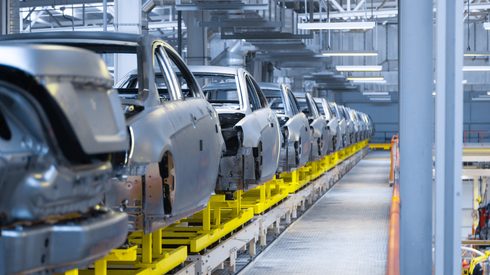At current levels, payables for nickel and cobalt in black mass are notably higher on average compared to mined materials such as cobalt hydroxide and nickel mixed hydroxide precipitate (MHP).
The primary driving factor for this is the inclusion of the value of the lithium, which is factored into the payable, contributing to higher levels. But, increasingly, many participants are moving away from this method and are adopting specific payables for the lithium content in black mass.
Fastmarkets is currently holding a consultation over the launch of lithium payables for black mass, details of which can be found here.
But though the inclusion of lithium is an important factor in the strength of black mass payables, the current lack of availability of material as well as growing demand are also significant factors, according to sources.
“Every man and his dog wants black mass right now,” a trader told Fastmarkets, adding “there’s just not enough material to go around.”
Participants across the globe have noted the growing significance of black mass as a key feedstock for cathode active material and battery producers.
“There are companies who have publicly stated their commitment to have 10-15% of their feedstock come from recycling,” a second trader said. “If you want to meet those goals you have to pay for the material as it’s a competitive market.”
The result of this is that participants are seeing an increasing gap in fundamentals between recycled material, compared to mined raw material.
Fastmarkets assessed the black mass, NCM/NCA, payable indicator, nickel, cif South Korea, % payable LME Nickel cash official price, at 77-80% on Thursday August 10, down from 80-83% on August 2.
Similarly, Fastmarkets assessed the black mass, NCM/NCA, payable indicator, cobalt, cif South Korea, % payable Fastmarkets’ standard-grade cobalt price (low-end), at 77-80% on Thursday, also down from 80-83% on August 2.
Fastmarkets research currently forecasts black mass supply at around 468,000 tonnes in 2023, rising to 753,000 tonnes in 2025.
Despite the recent decline in black mass payables, in comparison to these levels, payables for cobalt hydroxide and MHP are significantly lower, with raw material prices coming under pressure amid softer downstream demand.
This is particularly evident in the cobalt hydroxide market, where expectations over improved supply and weakening demand has led to recent declines in payables.
Fastmarkets assessed the cobalt hydroxide payable indicator, min 30% Co, cif China, % payable of Fastmarkets’ standard-grade cobalt price (low-end), at 56-61% on Wednesday, down from 58-63% on August 4.
Similarly, in MHP, Fastmarkets assessed the nickel mixed hydroxide precipitate payable indicator, % London Metal Exchange, cif China, Japan and South Korea, at 72-75% on August 4, down from 74-76% on July 28.
MHP prices have been somewhat supported by an apparent tightness in availability on a prompt basis, though the continued decline in nickel sulfate prices in China is putting pressure on payable levels.
Fastmarkets assessed the price for nickel sulfate min 21%, max 22.5%; cobalt 10ppm max, exw China, at 30,500-31,500 yuan ($4,234-4,373) per tonne on August 4, down from 31,000-32,000 yuan per tonne on July 28.
This downward pressure in prices is expected to impact black mass payables eventually though, with many consumers particularly pointing to the recent declines in lithium particularly.
“Fundamentally, it all depends on lithium pricing,” a consumer told Fastmarkets.
On a spot basis, lithium carbonate and lithium hydroxide prices in the seaborne market have been under pressure in recent weeks due to softening demand.
Fastmarkets assessed the lithium hydroxide monohydrate LiOH.H2O 56.5% LiOH min, battery grade, spot price cif China, Japan & Korea, at 36-38.50 per kg on Tuesday, down from 36-39 per kg the previous day.
These price levels represent a close to 5% decline at the midpoint since the beginning of August.
For battery-grade carbonate prices, the decline has not been as steep, at around 2%.
Fastmarkets assessed the lithium carbonate 99.5% Li2CO3 min, battery grade, spot prices cif China, Japan & Korea, at $36-38.50 per kg on Tuesday, down from $36-39 per kg a day earlier.
Want more insights and forecasts for the battery recycling and black mass market?
Keep up to date with global market insights and predictions for the battery recycling market with the Fastmarkets NewGen Battery Recycling Outlook.





